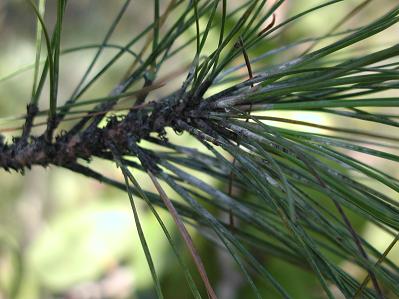


Located roughly 145 km north of Haiti in the Caribbean, the Turks and Caicos Islands (TCI) are two island groups that lie at the most south-easterly extent of the Bahamas Archipelago in the North Atlantic Ocean.
The land surface is composed of sediments derived from coral and other calcareous organisms and consists of a low topography with the highest points formed by ridges of limestone usually running the greatest length of an island. The Blue Hills on Providenciales form TCI's highest point at 49 m. The archipelago has a dry tropical climate, where rainfall averages about 736 mm (29 inches) per year making TCI the driest islands in the Bahamas Archipelago.
The vegetation of the Caicos Islands varies considerably from one part of the islands to another. The wetland complex of East, Middle and North Caicos dominates the low-lying areas of the Caicos Bank, where the land is periodically inundated by the tide. This area, comprising tidal flats, salt marsh and in sheltered areas, mangrove communities, occupy half of the land area of TCI. The wetlands are recognized as being internationally important as they mostly remain in their natural condition. Above tide inundation along the coast, plant communities have adapted to wind and salt spray and are influenced by the substrates on which they grow. Dune communities and coastal coppice are adapted to coral sand dune formations and differ to those communities growing in substrates which are based on fragmented limestone which tend to form open and stunted coastal-scrub communities. Further inland, where the soil is more fertile, the climax vegetation consists of limestone thicket (Tropical Dry Forest) where the vegetation can grow to 5m in height. The most distinctive type of vegetation in the Caicos Islands is the pineyards, where stands of Pinus caribaea var. bahamensis dominate. This habitat is not only locally important, it is internationally significant as the pine variety is unique to the Bahamas Archipelago. In the northern Bahamas, it forms large stands in Grand Bahama, Abaco, Andros and New Providence, and then skips to the Caicos Islands where it grows on Pine Cay, North Caicos and Middle Caicos. On some islands, for example Big Ambergris Cay, the vegetation is influenced by the resident iguanas which are the only native herbivore. As a result, the vegetation-mix tends to consist of those plant communities able to withstand herbivory.
Over 550 plant species are native to TCI and nine are endemic to the islands: Limonium bahamense (Plumbaginaceae), a succulent plant known as Turks and Caicos Island heather, thrives in the saline conditions of the salt flats and has been designated the islands' national flower; A vine, Cynanchum stipitatum (Apocynaceae); two herbs, Stenandrium carolinae (Acanthaceae) and Pepper-Grass, Lepidium filicaule (Brassicaceae); three sub-shrubs, Argythamnia argentea (Euphorbiaceae), Spermacoce brittonii (Rubiaceae) and Spermacoce capillaris (Rubiaceae); a cactus, Turk's Island Prickly Pear, Opuntia lucayana (Cactaceae); and finally, a Caicos Islands endemic orchid, Encyclia caicensis (Orchidaceae). TCI is home to 50 species that are endemic to the Bahamas Archipelago, and many of which are restricted to five or fewer island groups.

The most threatened habitat is the pineyard where an alien, invasive scale insect, accidently introduced from the US mainland, is attacking the Caicos pine. In the USA, Pine Tortoise Scale populations are kept in check by native predators and by the winter months which necessitate a dormancy period in the organisms life-cycle. In TCI, Pine Tortoise Scale perpetuates its 'feeding' stages unhindered by predation and without the need to hibernate. Thus, the pine trees have no time to recover and instead the scale insects inflict devastating damage to the native pines by continually sucking valuable moisture and sugar laden sap from the tree's needles. To make matters worse, the scale insects deposit a sugary 'honey dew' onto the needles which blackens through secondary infestation by 'sooty mould' which subsequently impedes the pines' ability to photosynthesize and transpire effectively.
The increasing number of tourist resorts and tourist activities pose the greatest threat to the islands' biodiversity. This is especially the case along coastal areas where the miles of pristine coastline are being converted to tourist and residential developments. Alien invasive plant species are also a concern. For example, the Australian pine tree Casuarina equisetifolia, introduced to stabilize sandy soils, is a serious invasive where it smothers natural vegetation and actually destabilizes sandy soils in hurricanes.
Please use the links below to see further details on conservation activities in the UK Overseas Territories.
British Indian Ocean Territory
South Georgia and the South Sandwich Islands
Sovereign Base Areas on Cyprus
Homepage of the UKOTs Online Herbarium


